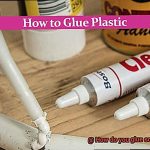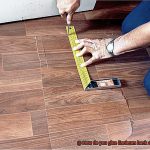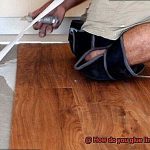Welcome to a comprehensive guide on the art of gluing two pieces of plastic together. Whether you’re fixing a cracked phone case or unleashing your creativity with plastic components, knowing how to glue them properly is essential.
Plastic is like that quirky friend who’s both flexible and stubborn. While it offers endless possibilities, bonding different pieces can be a bit tricky. But fear not. With the right knowledge and technique, you’ll be able to create bonds so strong they’ll make Hulk jealous.
In this blog post, we’re diving deep into the world of plastic bonding. We’ll explore various methods and walk you through each step, from picking the perfect adhesive to prepping surfaces like a pro. So get ready to unlock the secrets of achieving reliable and long-lasting bonds in the realm of plastic fabrication.
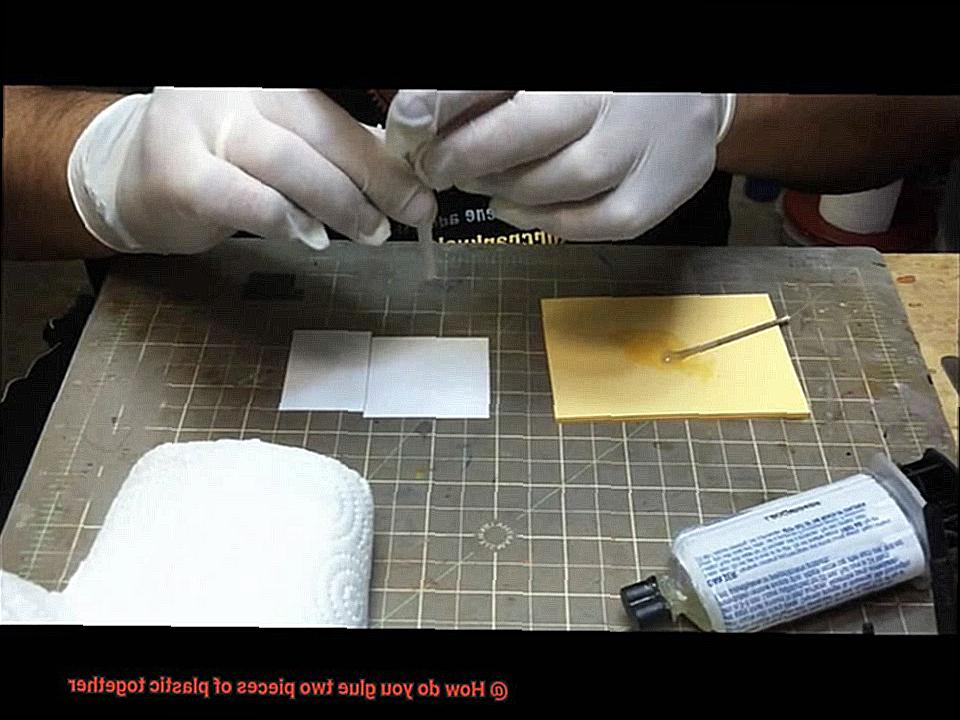
Let’s dive in and become masters of plastic fusion.
Types of Adhesives Used for Bonding Plastic
Contents
- 1 Types of Adhesives Used for Bonding Plastic
- 2 Preparing the Surfaces for Glue Application
- 3 Applying the Adhesive to the Plastic Pieces
- 4 Bringing the Two Plastic Pieces Together
- 5 Curing Time and Strength of the Bond
- 6 Reinforcing the Bond with Mechanical Fasteners or Additional Layers of Adhesive
- 7 Specialized Adhesives and Techniques for Difficult-to-Bond Plastics
- 8 Conclusion
Not all adhesives possess the same sorcery, making it crucial to select the right one for your plastic project. In this blog post, we will delve into the different types of adhesives used for bonding plastic and explore the key considerations one must take into account when making this choice.
Super Glue – The Fast and Furious:
Super glue, also known as cyanoacrylate adhesive, is a superhero among adhesives. Its lightning-fast drying time forms an indomitable bond between plastics like acrylic, polycarbonate, and ABS. Ideal for quick fixes and small projects, super glue’s magic may falter when used on certain plastics such as polyethylene or polypropylene.
Epoxy Adhesives – The Strong and Versatile:
If you seek unyielding strength, epoxy adhesives are your answer. With two parts—a resin and a hardener—combining to create an unstoppable force, these adhesives are perfect for rigid plastics like PVC and polyethylene. Impervious to moisture, chemicals, and high temperatures, they triumph over any challenge. Beware though, they require more time to cure than super glue.
Polyurethane Adhesives – The Flexible Friends:
For bonds that require flexibility, turn to polyurethane adhesives. These marvels resist moisture and endure stress with unwavering fortitude. They are perfect for plastics exposed to water or constant movement. However, be patient. Polyurethane adhesives take their time to cure.
Acrylic Adhesives – The Invisible Heroes:
When clarity is paramount, acrylic adhesives come to the rescue. Creating transparent bonds on plastics like acrylics, they resist yellowing over time. Impervious to chemicals and UV radiation, they are ideal for applications where aesthetics matter.
Polyolefin Adhesives – The Saviors of Low-Energy Plastics:
Certain plastics, like polyethylene and polypropylene, pose bonding challenges due to their low surface energy. Enter polyolefin adhesives, equipped with magical ingredients that enable them to stick to low-energy plastics and create robust and enduring bonds.
Conclusion:
Choosing the right adhesive for bonding plastic can make all the difference in the world. Whether you need a fast-drying super glue or a flexible polyurethane adhesive, there’s an adhesive out there for every plastic project. Just remember to clean and prepare the surfaces properly before applying the adhesive, follow the manufacturer’s instructions, and wear your safety gear.
Preparing the Surfaces for Glue Application
Before you dive into the magical world of adhesives, it’s essential to understand the importance of surface preparation. Just like any superhero needs a solid foundation, preparing the surfaces for glue application is crucial for achieving a successful bond.
So, grab your cape and let’s explore the secrets to creating an unyielding bond between two pieces of plastic.
Cleanliness – The First Step to Glory:
Before applying any adhesive, cleanliness is key. Dirt, dust, or grease can hinder the adhesion process and weaken the bond. So, grab a mild detergent or solvent and give those plastic pieces a thorough scrub. Rinse them with care and allow them to dry completely before proceeding.
Roughening the Surface – Creating Texture for Success:
Smooth and non-porous plastics might need a little rough love to enhance adhesion. Get your sandpaper or sanding block ready and gently sand the surface in circular motions. This creates a textured surface that allows the adhesive to grip tightly, like a hug from a long-lost friend.

Removing Existing Coatings – Stripping Away Obstacles:
Say goodbye to any existing coatings or finishes on your plastic pieces. Paint or varnish can prevent proper bonding between the plastic, so it’s time to bid them farewell. Use appropriate paint removers or sanding techniques to strip away these obstacles and reveal the bare plastic beneath.
Degreasing – Banishing Grease for Good:
Grease and oils act as sneaky barriers, preventing proper adhesion. Show them who’s boss by using a suitable degreasing agent or rubbing alcohol to banish any traces of grease from the plastic surfaces. Ensure they are squeaky clean and ready for the adhesive to work its magic.
Etching or Priming – Tackling the Plastic Puzzle:
Some plastics, like polyethylene and polypropylene, can be a puzzle to bond using traditional adhesives. But fear not. You can overcome this challenge by etching the surface or applying a plastic-specific primer. Etching creates microscopic grooves on the surface, enhancing adhesion, while primers strengthen the bond between the adhesive and the plastic, like a secret weapon for success.
Drying Time – Patience is a Virtue:
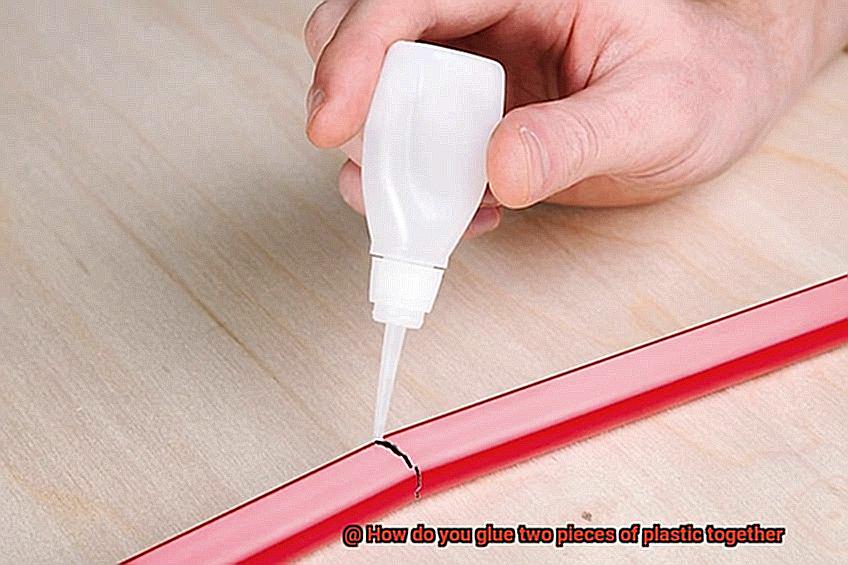
After all the hard work of preparing the surfaces, it’s time to exercise a little patience. Allow the surfaces to dry completely before applying the adhesive. The drying time may vary depending on the cleaning agent or degreaser used. Follow the manufacturer’s instructions or wait until the surfaces feel dry to the touch. Remember, good things come to those who wait.
Applying the Adhesive to the Plastic Pieces
Applying adhesive to plastic pieces is a crucial step in successfully bonding them together. Choosing the right adhesive, preparing the surfaces, and applying the adhesive correctly all play a vital role in creating a strong and durable bond.
First and foremost, selecting the right adhesive is key. There are various types available, such as cyanoacrylate (super glue), epoxy, polyurethane, and acrylic adhesives. Each type has its own strengths and weaknesses, so it’s important to choose one that suits the specific plastic materials you are working with. Consider factors like the type of plastic, required bond strength, temperature resistance, and environmental conditions.
Once you have your adhesive, it’s time to prepare the surfaces. Cleaning is essential – no one likes a dirty bond. Use a mild detergent or isopropyl alcohol to remove dirt, dust, grease, or other contaminants. It’s important to ensure that the surfaces are completely dry before proceeding.
In some cases, roughening the surfaces can improve adhesion. Smooth or glossy plastic surfaces may need a little texture for the adhesive to grip onto. You can achieve this by using fine-grit sandpaper or creating small scratches with a utility knife or abrasive pad. However, be careful not to damage the plastic too much.
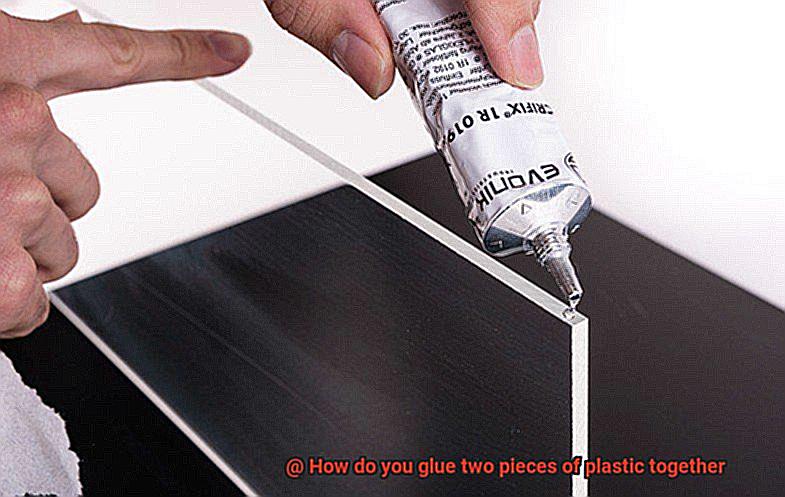
Now it’s time to apply the adhesive. Follow the manufacturer’s instructions carefully. Apply a small amount of adhesive to one surface using a brush, applicator tip, or nozzle provided with the adhesive. Avoid using excessive amounts as it can lead to messy applications and weaken the bond.
Once you’ve applied the adhesive, align and press the plastic pieces together firmly. Apply even pressure across the entire bonded area to ensure proper contact between the adhesive and surfaces. Depending on the adhesive used, you may need to hold or clamp the pieces together for a specific period while they cure or dry.
Speaking of curing and drying time, different adhesives have varying requirements. Follow the manufacturer’s recommendations and be patient. Some adhesives may take hours or even days to fully cure. Avoid stressing or moving the bonded pieces during this time to prevent weakening the bond.
Bringing the Two Plastic Pieces Together
Get ready to dive into the world of adhesive magic as we explore the secrets to bringing these plastic pieces together. From surface preparation to choosing the right adhesive, we will guide you through each step to ensure your bond is nothing short of perfection. So grab your goggles and let’s get started.
Step 1: Prepare the Surfaces
Before embarking on your gluing adventure, give your plastic pieces a well-deserved spa treatment. Cleanse their surfaces with isopropyl alcohol or a similar cleaning agent, removing all traces of dirt, dust, and grease. Remember, cleanliness is key to a successful bond.
Step 2: Create Texture
Smooth and glossy plastics can be tricky to bond. Give them some personality by adding texture. Gently roughen the surfaces with fine-grit sandpaper, creating tiny scratches that provide grip for the adhesive. It’s like giving your plastics a fashionable makeover.
Step 3: Apply the Adhesive
Now it’s time to unleash the power of adhesives. Choose from a variety of options such as epoxy, cyanoacrylate (super glue), or polyurethane-based adhesives. Select an adhesive that suits your plastic materials and desired bond strength. Follow the manufacturer’s instructions carefully as you apply a thin, even layer onto one of the plastic surfaces. Remember, a little goes a long way.
Step 4: Bring Them Together
The moment of truth has arrived – it’s time for these plastic pieces to unite. Align them carefully and apply firm pressure, ensuring that the adhesive spreads evenly. Some adhesives may require holding or clamping the pieces together for a specific period until the glue sets. Patience is key here as good things come to those who wait.
Step 5: Curing Time
Don’t rush the process. Even after the glue has set, some adhesives need additional time to reach their maximum strength. Treat your bonded plastic pieces with care during this curing period, allowing them the time they need to solidify their bond. Avoid subjecting them to excessive stress or strain until they are fully cured and ready for action.
Curing Time and Strength of the Bond
Today, we embark on a fascinating journey into the realm of glue magic. In this blog post, we’ll unveil the secrets behind two crucial factors that determine the quality of bonding plastic pieces together: curing time and bond strength. So, fasten your seatbelts and get ready to explore the depths of this adhesive sorcery.
Curing Time: The Waiting Game
Factors Affecting Curing Time:
- Temperature: Higher temperatures are like a warm embrace for your adhesive, promoting faster curing. So, if you’re in a hurry, a little heat can do wonders. Think of it as giving your adhesive a cozy blanket.
- Humidity: Moisture in the air can slow down the curing process, leaving you tapping your fingers impatiently. Dryer environments are ideal for swift curing action. Say goodbye to rainy days.
Bond Strength: The Power Within
Now that we understand curing time, let’s dive into the heart of adhesive sorcery – bond strength. Think of bond strength as the mystical force that holds your plastic pieces together. It’s like a superhero’s unbreakable grip.
Factors Influencing Bond Strength:
- Adhesive Selection: Not all adhesives are created equal when it comes to bonding plastics. Choose an adhesive specifically designed for the type of plastic you’re working with to ensure optimal bonding strength. It’s like finding the perfect partner for a dance.
- Surface Preparation: A clean canvas is essential for strong bonding. Rid your plastics of dirt, grease, or oils through proper cleaning techniques. Sanding or roughening the surfaces can also enhance the adhesive’s grip. It’s like creating a smooth runway for a perfect takeoff.
The Perfect Bond: A Symphony of Techniques
To achieve a bond that will withstand the test of time, it’s crucial to follow proper application techniques:
- Even Application: Like a painter strokes their brush across a canvas, apply the adhesive in an even layer, ensuring complete coverage. This guarantees a bond that is strong from every angle. It’s like weaving a tapestry of strength.
- Curing Time: Patience, my dear friends, is key. Follow the manufacturer’s instructions diligently and allow the adhesive to cure for the specified duration. Rushing the process may lead to a weaker bond, while excessive curing time will not boost strength further. It’s like waiting for a flower to bloom; timing is everything.
Reinforcing the Bond with Mechanical Fasteners or Additional Layers of Adhesive
The secret lies in reinforcing the bond between plastic pieces with mechanical fasteners and additional layers of adhesive. In this blog post, we will explore the advantages and disadvantages of these techniques, as well as provide tips on choosing the right fasteners and adhesives for your project.
Advantages of Using Mechanical Fasteners:
Mechanical fasteners, such as screws, nuts, bolts, or rivets, offer several advantages when reinforcing the bond between plastic pieces. They provide a reliable physical connection that enhances the strength of the bond. Fasteners are particularly useful when working with different types of plastics with varying strengths and properties. By selecting the appropriate fastener and following proper installation techniques, you can achieve a secure and long-lasting connection.
Types of Adhesives:
When it comes to additional layers of adhesive, there is a plethora of options available. Epoxy, cyanoacrylate, and polyurethane adhesives are just a few examples. Each adhesive type has unique properties and strengths, allowing you to choose one that best suits your specific application.
Choosing the Right Fastener or Adhesive:
Selecting the right fastener or adhesive is crucial for achieving a strong and reliable bond between plastic pieces. When choosing a mechanical fastener, consider factors such as compatibility with the plastic materials being joined, load requirements, and the need for disassembly. For adhesives, compatibility with the specific types of plastic is paramount. Consult manufacturer guidelines or seek expert advice to ensure optimal adhesive selection.
Disadvantages of Mechanical Fasteners:
While mechanical fasteners offer excellent strength and security, they may require drilling pilot holes that can weaken or damage certain plastics. Additionally, they may not be suitable for applications requiring a seamless appearance. However, these drawbacks can be mitigated by careful selection and installation techniques.
Disadvantages of Additional Layers of Adhesive:
While additional layers of adhesive can provide extra reinforcement, they may add thickness or require longer curing times. This can be problematic in applications where space or time is limited. However, with proper planning and preparation, these challenges can be overcome.
Specialized Adhesives and Techniques for Difficult-to-Bond Plastics
Specialized adhesives and techniques are essential when it comes to bonding difficult-to-bond plastics. These plastics, such as polypropylene (PP), polyethylene (PE), and polytetrafluoroethylene (PTFE), have low surface energy, making it challenging for traditional adhesives to form strong bonds. However, with the right knowledge and tools, these plastics can be joined together securely.
One popular adhesive for difficult-to-bond plastics is cyanoacrylate, commonly known as super glue. Its fast curing time and strong bond strength make it a go-to choice. However, it may not work well with all types of plastics, especially those with low surface energy. To overcome this challenge, plasma treatment can be employed. By subjecting the plastic surface to ionized gas, plasma treatment increases its surface energy and promotes better bonding with cyanoacrylate adhesives.
Epoxy resin is another specialized adhesive that excels at bonding difficult-to-bond plastics. With excellent bonding properties and compatibility with a wide range of materials, including plastics, epoxy adhesives offer high strength and durability. It’s important to note that epoxy adhesives require a longer curing time compared to cyanoacrylate adhesives.
Proper surface preparation is crucial for achieving strong bonds with difficult-to-bond plastics. Thoroughly cleaning the plastic surfaces and removing contaminants is essential. Solvents like isopropyl alcohol or acetone are effective for this task. In addition to cleaning, roughening the plastic surfaces can enhance adhesion. This can be achieved through sanding or using abrasive materials to create a rough texture, increasing the surface area for better contact with the adhesive.
For some challenging plastics, primers or adhesion promoters may be necessary to improve bonding. These substances are applied to the plastic surface before applying the adhesive, enhancing its adhesion properties.
In cases where traditional adhesives do not suffice, mechanical fastening techniques can be employed. Riveting or using plastic welding methods can create a physical connection between the plastic pieces, ensuring a strong and durable bond.
To ensure successful bonding, it is important to follow the manufacturer’s instructions for specialized adhesives and techniques. Testing the adhesive and bonding technique on a small sample or scrap piece of plastic is also recommended before proceeding with the final project.
8a4dcQFHGDI” >
Also Read: How To Glue Acrylic Together? – Glue Things
Conclusion
When it comes to joining two pieces of plastic together, finding the right adhesive is key. But fear not, for I am here to guide you through this sticky situation. Whether you’re working with PVC, acrylic, or any other type of plastic, there are a few tried-and-true methods that will ensure a strong bond.
One option is using epoxy glue, which is known for its exceptional strength and durability. This adhesive consists of two components that need to be mixed together before application. Once mixed, it forms a powerful bond that can withstand even the toughest conditions.
If you prefer a quicker solution, cyanoacrylate glue, also known as super glue, might be your best bet. This fast-acting adhesive bonds almost instantly upon contact and creates a strong hold in no time. Just be careful not to get it on your fingers – trust me on this one.
For certain types of plastics like polyethylene or polypropylene, which are notoriously difficult to bond due to their low surface energy, a special type of glue called plastic welder can do wonders. This unique adhesive actually melts the plastic surfaces together, creating a fusion that is incredibly strong and long-lasting.
No matter which adhesive you choose, proper preparation is crucial for success. Make sure the surfaces you’re bonding are clean and free from any dirt or grease. You may also want to roughen up the plastic slightly with sandpaper to create more surface area for the glue to adhere to.
In conclusion, gluing two pieces of plastic together requires selecting the right adhesive for the job and following proper preparation techniques. Whether you opt for epoxy glue, super glue, or plastic welder, remember to read and follow the instructions carefully.


